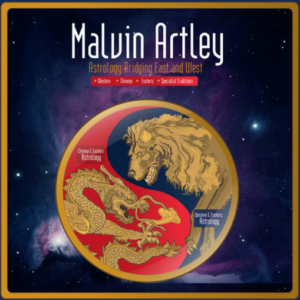
2014 in L'Alpe di Siusi, fresh from the US and Australia.
This site will be undergoing upgrades for the next months (from Sep 2021). Check back in from time to time!
If you would like a consultation, go to the 'Enquiries' button at right and fill out the form
To subscribe to the monthly newsletter, go to the 'Subscribe' button at right
I can be reached and read at the social media icons, top right
Comments to newsletters are temporarily closed. If you want to comment, contact me at admin@malvinartley.com or use the 'Enquiries' button, at right


Modern Science and the Nature of Physical Reality
27 Oct 2015
© Malvin Artley
“I think that modern physics has definitely decided in favor of Plato. In fact the smallest units of matter are not physical objects in the ordinary sense: they are forms—ideas which can be expressed unambiguously only in mathematical language.”
“The atoms or elementary particles themselves are not real. They form a world of potentialities rather than one of things or facts.”
“The first gulp from the glass of natural sciences will turn you into an atheist, but at the bottom of the glass, God is waiting for you.”
Werner Heisenberg, one of the fathers of quantum physics.
_________________________
Most people interested in esoteric sciences are well familiar with the idea that matter and energy are equivalent statements, or that ‘all is energy’. It is an idea that has especially come to be used in New Age vernacular, and it is bandied about constantly among esotericists. It is a statement we take for granted in this atomic age, and we have seen the effects that can be wrought by changing even a few grams of matter instantaneously into energy, as witnessed during atomic explosions. Do we really understand the physics behind the statement, though? Would we also understand the statement that science brings us closer to God, or the Great Universal Principle, if you like? When we say that matter and energy are equivalent statements, seldom do we realize the power that puts in our hands, or the potential for real works of service—if only we knew how to utilize the energy in all that we think is material. When we come to consider the effects that the mind, for instance, can have on physical health and well-being, we get an inkling of what we can do when working solely with energy instead of material substance, as in esoteric healing. It is an idea with which we feel quite comfortable, and for the most part we think we know what it means—but do we really? Science has given us big clues and has shown conclusively and dramatically that matter/energy equivalency is fact, but there are other parts to this idea with which we may not be so familiar, and which, in a sense, drive the reality of this idea home.
In the East, the idea of the equivalence of energy and matter has been known for centuries, but it is known by another name—emptiness. Meditation on emptiness in a Buddhist context takes one to the very portal of full enlightenment and endows one with the superphysical powers which allow us to utilize these elemental forces for the greater good. Even then, students do not know the full import of what is being taught about emptiness until they have a direct realization/experience of it in higher meditative states. In the West the term ‘emptiness’ is sometimes seen badly translated as ‘nothingness’, which gives one the idea of nihilism. The truth is quite the opposite. In reality, we live in an infinitely vast sea of energies. Science proved this in the early part of the last century, but we still hold on to our notions of a dense, material existence, and that there is a sort of material/energetic duality that we can alternate between somehow—what in science is called the wave/particle duality. To find out the truth—is matter material or energetic?—we need only look at the structure of the simplest material known to us, the hydrogen atom, and then we might begin to get clearer on just what exactly we are dealing with in this physical existence of ours, and where it might take us.
Most of us coming through school would be familiar with the so-called ‘planetary model’ of the atom—a nucleus which is orbited by one or more electrons, much like our solar system with the sun (nucleus) and the planets (electrons). This is what is known in physics as the Bohr model[1] of the atom, seen below. It was that model that gave rise to quantum mechanics and it was a valid model for a number of years. It is still taught in schools as an introduction to particle physics and quantum mechanics. Its constituent parts are measurable and it conforms to experimental and empirical evidence. In quantum mechanics, the Bohr model (ca. 1913) remains sound. It has since been superseded by the valence shell model of the atom, but for our purposes, the Bohr model will be the most illustrative for what we are about to consider. It is also easier to understand.
In our everyday consciousness we think that atoms of hydrogen, iron, aluminum or what have you are tangible. Iron feels hard, for instance, and certainly hurts like the dickens if we get hit by a piece of it. Are we actually feeling ‘iron’, though, or are we feeling something else? To get at the bottom of this, let’s have a look at our little Bohr model of a hydrogen atom. To begin, it is an extraordinarily small thing. It is about a billionth of a meter in diameter (one Angstrom), and this marks the outer orbit of the electron whizzing about the nucleus of the atom, which is a single proton, at the speed of light. If we could magnify this to a scale which we could see, then we get a real perspective of what we are looking at with our simple little example of a mini solar system. We might note at this juncture that the illustration above is not drawn anywhere near to scale. The actual figures for the constituent parts of our atom are as follows:
Orbital radius of the electron: 5.29 X 10-11 m (distance between proton and electron)
Radius of the proton: 0.8775 X 10-15 m, which is known as the proton charge radius
If we compute the ratio between the size of the proton and the orbital radius of the electron, then we have a figure we can work with to begin to understand the scales of distances involved. That ratio turns out to be on the order of 60284:1, where 1 equals the radius of the proton. Now, if we could magnify this hydrogen atom so that the nucleus of the atom was, say, 100 mm (about 4”), then how far away would the electron be? Well, it would lie at a distance of roughly 6 km from the nucleus of the atom, or about 3 ¾ miles. That’s a pretty astounding figure. It is worth noting, too, that an electron has no known substructure and therefore no size, that it is considered to be merely a point with a negative charge. Now our visualization gets very interesting indeed. What are we really looking at here with our hydrogen atom? We have a proton about the size of a grapefruit being orbited by an electron almost 4 miles away that has no physical characteristics that we can see—which is all but microscopic if it has any size at all—but which defines something that we think of as material. Let’s let that sink in for a minute.
Then, let us consider our proton. As it turns out, a proton is not an ultimate particle. It is composed of parts—quarks—one ‘down’ and two ‘up’ and quarks, as seen below. The wavy lines between the quarks are the connecting forces.
As it turns out, these quarks have similar characteristics to the electron, with a partial electrical charge, and the distances between them are similar again to the orbital distance between the electron and the proton. But, we know that a proton has mass. If the quarks have no weight (are dimensionless), then what makes up the weight of the proton? It turns out that the mass of the proton is made up almost entirely of the forces that hold the quarks in place. How can a force have mass? Well, this one is easy. Energy (force) converts to mass by a simple formula:
E=mc2
Where c=the speed of light, m=the mass of the object and E= the energy. So, from this little equation we see that potential energy of our tiny atom is immense in comparison to its size, since the speed of light is 300,000 km/sec, or 186,000 mi/sec. The upper (max) size of a quark is currently placed at 10-18 meter, or one attometer, but they are essentially considered to be a point (dimensionless) like an electron. The outermost distance between them is limited to 10-15 meters. So, we are looking at a system that has no real material basis whatsoever. We’ll let that one, too, sink in for another minute.
What are we really looking at with materials then, if they are not actually material? When we come down to it, anything material is based primarily upon three things: space and time—or spacetime—and energy. In other words, the nature of our physical reality is spacetime, with whatever enegy we have within that spacetime at our disposal. The electron orbiting the hydrogen nucleus has a certain period, or frequency, which is measurable, which brings in the time element. It also brings in the idea of the wave function of the atom, because waves occur with a frequency. So, our Bohr model of the atom can also describe a wave function, hence the wave/particle duality. What did the Ancients in the East know about our physical existence, especially in relation to our current scientific models? Consider the following:
“Form is empty. Emptiness is form. Emptiness is not other than form; form is also not other than emptiness.”[2]
Along with this, the Eastern concept of emptiness also posits that no phenomenon (and that means any physical construct or event) has any inherent self-existence—i.e., everything comes about as the result of preexisting causes, and this includes our own personality, or sense of ‘I-ness’. This again brings in the time element, because a string of causes leading to an event or a person also directly involves the time element. In short, we exist in a stream of spacetime, nothing more, a moving, ever-changing sea of energy that to our minds has no beginning or end. In the East, the first realization of this is said to be the doorway to full enlightenment. Now there’s a thought.
“He who has not understood the view of emptiness does not have the basis for liberation.”[3]
Also, we have the following, paraphrased from Nagarjuna’s Bodhichittavivarana:[4]
The character of …enlightenment itself is indivisible from space. (v. 47)
The mind abiding concept-less has the character of space. (v. 51)
Emptiness is but the ending of the stream of good and evil thoughts. (v. 50)
[I would add also:] Meditation on emptiness is in fact meditation on space. (from v. 51)
All this is quite a bit to take in, if we really think about it, and again, we might want to take a few minutes to let it sink in. I remember when I first considered all these concepts when I was fresh out of university, and I distinctly remembered the moment when I ‘got it’—all the hairs stood up on my arms, every pore on my skin tingled and I had to sit down for a while. The rest of the day was spent in wonderment at the profound order and possibilities within the universe. I was dumbfounded for some time. I also haven’t looked back. The preceding, if we understand it correctly, shakes our Western view of reality to its very foundations and destroys the notion of materialism—for that is what materialism is—a notion. Materialism has no foundation, other than in one’s own mind. What we soon see from this is that we misperceive reality if we see things, people and events as tangible, or as something upon which we can rely, for everything is in a constant state of change.
What remains, then, if the world is not material and everything we know will eventually change, including ourselves? Energy, within the context of spacetime. Even then, we eventually find that even spacetime itself is an illusion, and then all that is left is energy. Until one learns that energy is the key to change, then spiritual liberation is impossible. The Ancients had it right, and now we in the West have a way that we can understand it. We are also in the very early stages of being able to tap into that infinite reservoir of energy. That is what lies immediately before humanity in our present day and time. If we can learn the secrets of vibration and energy, then our liberation from the restrictions and suffering of this world is assured, as well as for those around us. Materialism will disappear from the Earth. It has been said that meditation on emptiness brings only happiness, and in the preceding points, we may perhaps begin to see how that is possible. Such meditation releases us from our restrictive thinking. We have only to look inward, instead of constantly seeking for solace or gain in the material world. And in our inward looking, we make the world happier, as well as ourselves. It’s something to think about.
Lastly, for those who might be interested in the relative distances within the solar system in comparison to a hydrogen atom, we have the following approximations:
The sun: 109 earth radii at the sun’s equator (696,342 km)
Earth’s orbital radius: 1.5 X 108 km
Comparison between the electron ratio in the atom and distance in the solar system: 280 AU
Ratio between heliopause and solar radius: 26,015 (the electron/proton ratio=60284:1)
Our electron would be somewhere between the heliopause and the Oort cloud.
Ratio between earth’s orbit and solar radius: 215 (1 AU)
Ratio between Pluto’s orbit and solar radius: ~8492
Ratio between Kuiper cliff and solar radius: 11825
Ratio between Sedna’s average orbit and solar radius: 112,660
Ratio between inner boundary of Hill’s cloud (inner Oort cloud) and solar radius: 430,000
Conclusion: Our solar system is but an atom in a comparatively infinite universe
[1] Named after Niels Bohr (1885 – 1962), Danish physicist. Born 7 Oct 1885. Bohr was also a philosopher.
[2] The Heart of the Perfection of Wisdom Sutra (Arya-bhagavati -prajnaparamita-hridaya-sutra) by Arya Nagarjuna (c.150 – c.250 CE)
[3] The Three Principle Aspects of the Path, Tsongkhapa (1357 – 1419)
[4] Arya Nagarjuna (ca. 150–250 CE), Bodhichittavivarana (Exposition of the Enlightened Mind).
Related